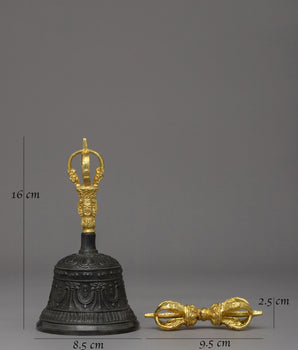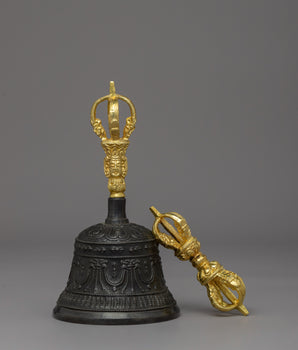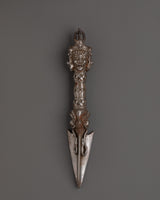
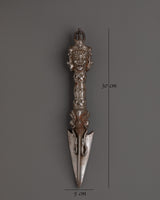

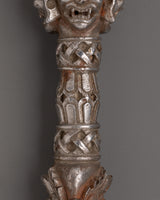



Three-Faced Iron Phurba Dagger | Vajrakilaya Tantric Ritual Tool for Protection

100% AUTHENTIC

HANDMADE

FREE SHIPPING
Three-Faced Iron Phurba Dagger | Tibetan Buddhist Dagger for Meditation and Altar
--------------------------------------------
Size:30cm(Height) x 5cm(Width)
Weight: 0.98kg
Material: Iron
--------------------------------------------
About The Ritual Item :
Discover the spiritual power of this Three-Faced Iron Phurba Dagger, a sacred ritual tool used in Vajrayana Buddhism to remove obstacles, repel negative energy, and invoke protective deities. This Phurba depicts the wrathful deity Vajrakilaya, who is renowned for his fierce compassion and ability to see through spiritual delusion. The three faces represent victory over the three root poisons: ignorance, attachment, and aversion.
This Phurba stands 30 cm tall, 5 cm wide, and weighs 0.98 kg. It is created from iron, giving it a bold, dominating appearance. This ritual implement is visually beautiful as well as spiritually powerful, with intricate carvings of wrathful faces and a triple-bladed point. It is suitable for altar displays, energy-clearing ceremonies, and deep meditation practices rooted in the Tantric Buddhist tradition.
Introduction To The Phurba :
The ceremonial dagger (Sanskrit: Kila; Tibetan: phurba) is significant for expelling evil and is believed to be particularly effective in neutralizing the forces that obstruct Tantric Buddhist practice. It has ancient origins, first appearing in the Indian Rig Veda as the core blade of the vajra used by Indra to destroy the primordial cosmic snake Vritra. Kila, which means peg or stake in Sanskrit, was most likely associated with Vedic sacrifices. Meditation on the Vajrakila Tantra, an early Indian scripture first promoted in Tibet in the eighth century by Padmasambhava, one of the founding teachers of Tibetan Buddhism, is used to invoke the three-headed Vajrakila Buddha.
How to set up your own Buddhist Shrine?
Find a clean, quiet, and uncluttered spot
Set up an altar table, and cover it with an altar cloth that calls to you
Place your sacred item (statue, thangka, or a picture of Buddha) at the center
















